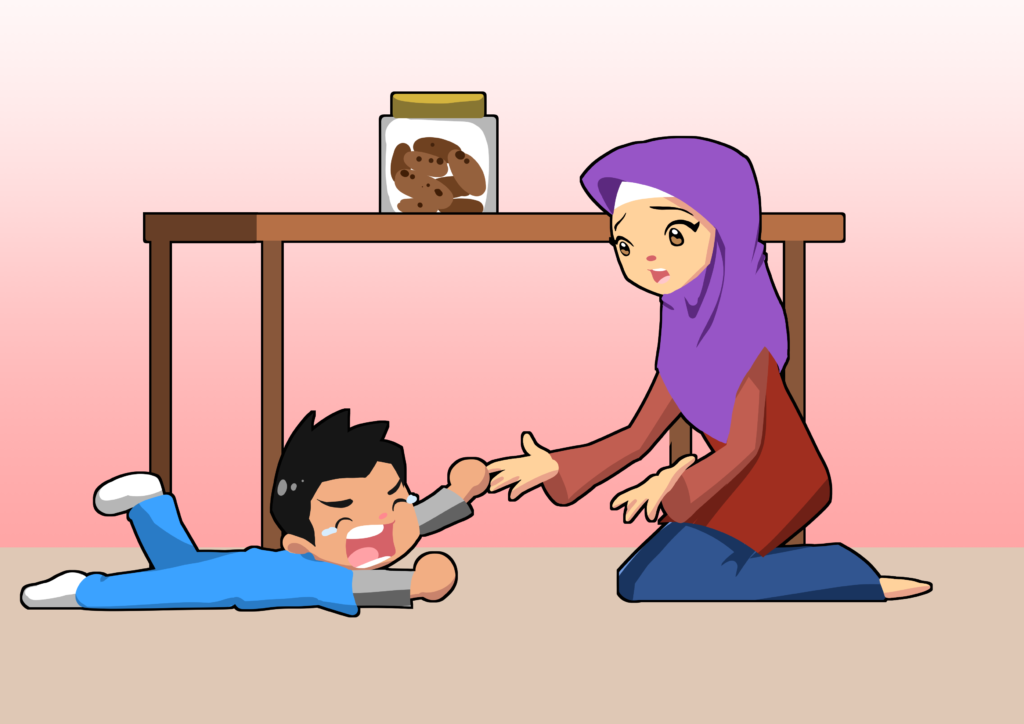




We often use the word ‘tantrum’ and ‘meltdown’ interchangeably. Whenever a child starts to cry or gets upset, we assume that the child is ‘throwing a tantrum’ or ‘having a meltdown’. But do we know what are the meanings of the terms?
Tantrums and meltdowns are two different situations. It is very difficult to differentiate between them by just looking at the upset child. Knowing the causes of tantrums and meltdowns can help us learn how to manage the situations.
A tantrum happens when the child cannot control his behaviour when what he wants is not fulfilled or agreed upon by the adults. For a child who has neurodevelopmental issues, such as a child with autism, or an ADHD child, the frustrations are computed as real, upsetting feelings which last for a long time. The feelings affect his control over his behaviour as his thinking about his wants becomes an obsession.
Meltdowns, on the other hand, can occur across a lifespan and are not triggered by his wants but by his surroundings. His over-sensitiveness about the environment is not the same as others. Sounds accepted by our ears might be too loud for him. Similarly, the normal lighting in the supermarket might be too bright for him. So his sensorial system becomes ‘overloaded’, and the child shows it by throwing a ‘meltdown’, telling the world that ‘my body system is melting down’.
Meltdowns can occur with or without an audience. Two obvious signs to look for are rumbling and stimming. Rumbling is when a child starts feeling uncomfortable, fidgeting, playing with his hands, or making noises. After that, the child will try to deal with the situation by making physical movements to self-stimulate such as moving his or her body from front to back, like a rocking motion, or flapping his or her hands.
How do we deal with tantrums and meltdowns? For tantrums, the easiest way might not be the best way, is to give the child what he wants. By doing so, the probability of the child using tantrums to get what he wants is highly likely to repeat. Another way to address tantrums is by ignoring them. Make sure the child is in a safe area, and let the child takes his or her frustration out. This is the recommended practice suggested by most psychologists and educators.
The child learns that what he wants can be achieved through other ways and that there are things that he wants that are not safe or healthy for him. The handling of a child’s tantrum should have a long-term behavioural modification goal attached to it.
Likewise, in the case of a child facing ‘meltdown’ condition, the over-stimulations that are triggered by the environment must quickly be detected by the parent. One of the quickest ways is to take the child away from the environment once he is showing the symptoms through his body movements or words.
According to the founder of Little Ones Eduworld (LOE), Puan Wan Roslina Wan Yusoff, our Educational Psychologist, there are a few tips that parents can follow to manage meltdowns. Parents can start by identifying what triggers the child’s sensory sensitivity. Try to avoid noisy or bright places. A new condition could trigger sensory overloading. Apart from that, always bring the child’s favourite item when going out or traveling. This will help to calm the child down by using a familiar item when there are changes around him. Talk to your child should there be any changes to the routine to prepare him for it. For example, before traveling to a new place, you can explain to your child what to expect there. Show them photos of the area, and activities that you might be doing as well.
When you notice your child started rumbling or stimming, immediately calm him down by taking him away from the area. Bring him to a quieter place to relax. Teach your child how to communicate when he feels uncomfortable about something.